
Saint-Petersburg central aeration station located near the Gulf of Finland takes in sewage wastes that come from the central part of the city. Let’s see how they process the water before it enters the Gulf.
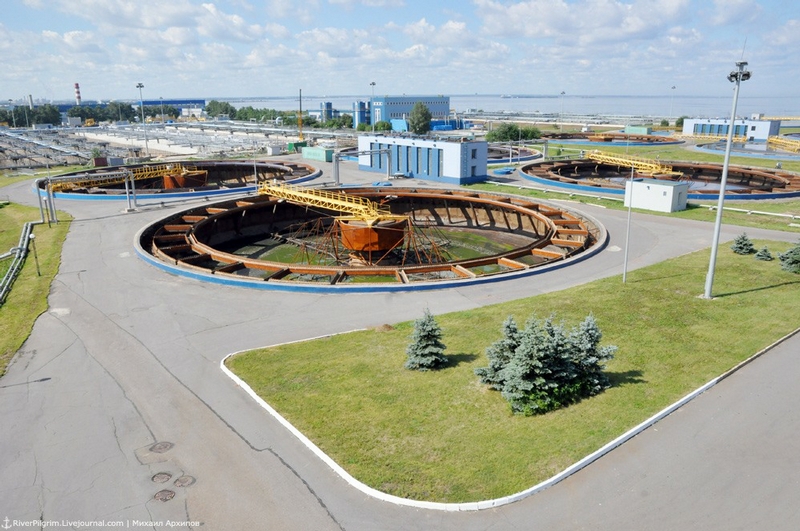
The station is located on an artificial island Beliy (White Island). The island was created in 1966 when the area was increased from 16 to 55 hectares. The station was put into operation in 1978 whereas the second line of purification plants was launched in 1985. This aeration station processes up to 1.5 million cubic meters of wastes a day. Through 2 other largest city’s wastewater treatment plants – the Northern aeration station and the Southwest wastewater treatment plant- more than 800 million m3 of sewage is discharged annually, which makes two thirds of all waste waters in St. Petersburg.
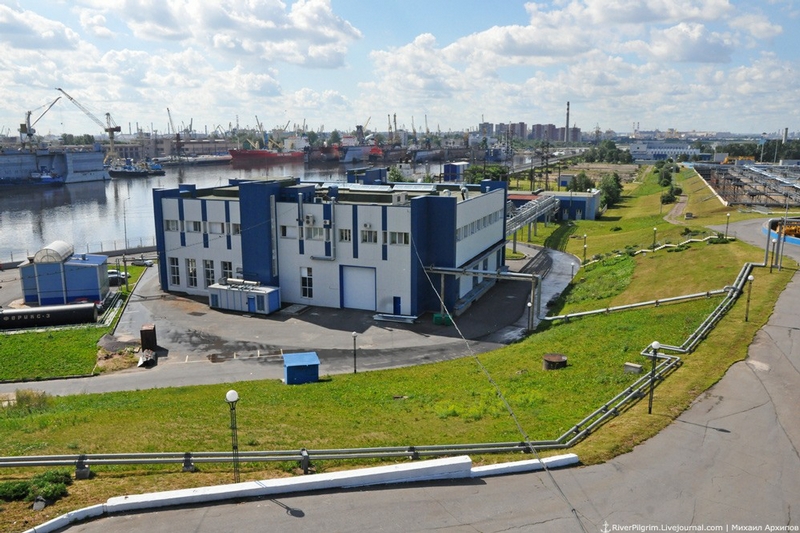
First and foremost, wastes are accepted by the main pump station.

After that the wastes go 55 meters high and undergo mechanical and biological cleaning.

Mechanical cleaning is the first stage. Water is freed from garbage that wasn’t found by traps on the main pump station.
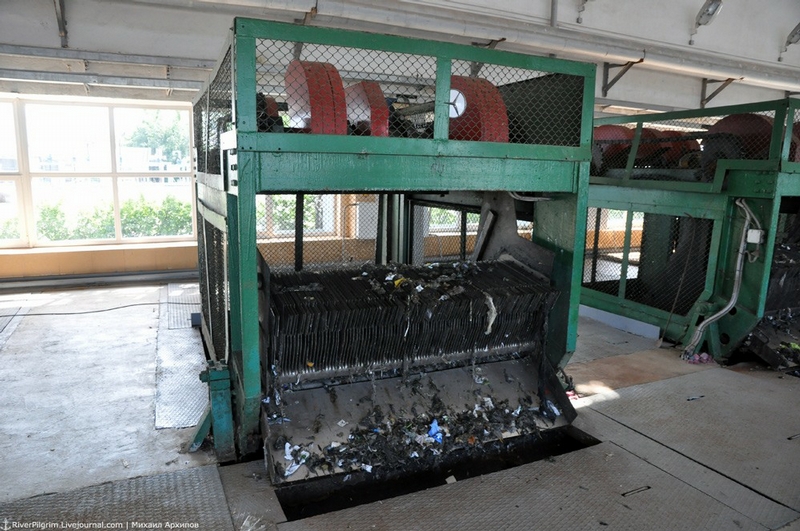
Here trap holes are decreased up to 6 mm. Mobile phones, ornamental and bodies of kittens and pups are found at this stage.
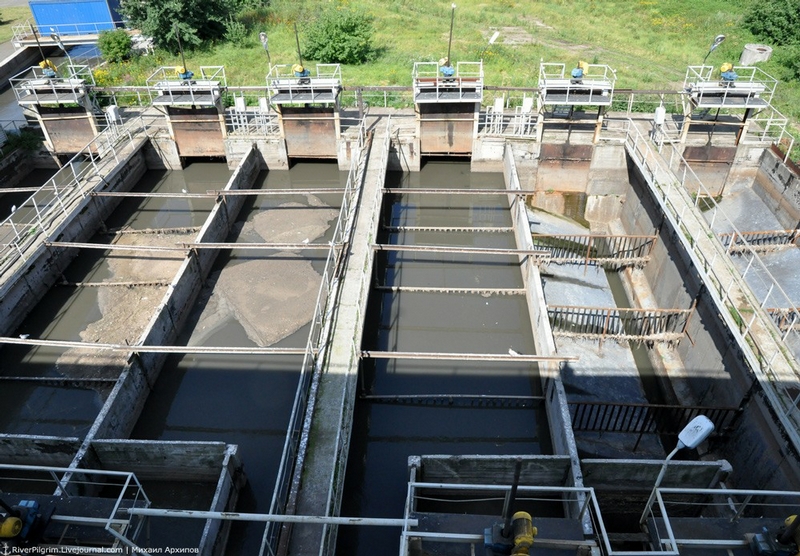
At the next stage water is separated from the sand which is later taken to a special polygon.

Water undergoes two types of cleaning including mechanical and biological ones. Streams are distributed over primary drain boxes.

This pump station deals with crude residue.
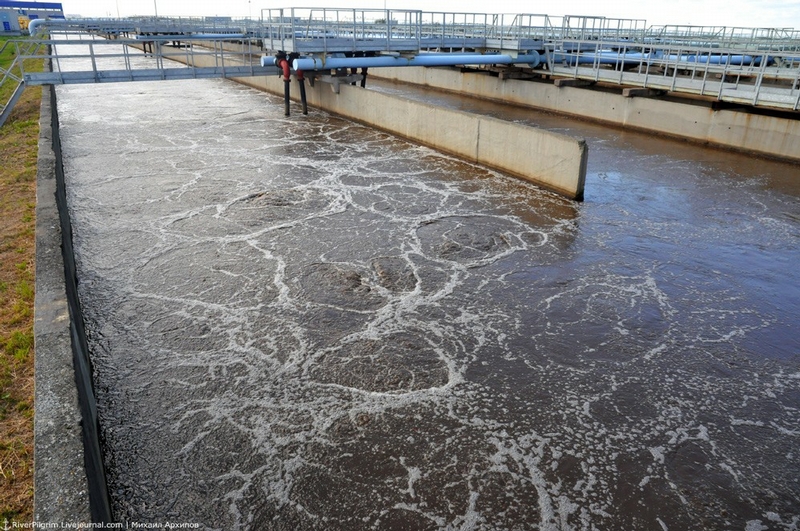
The station is equipped with 12 aerotanks with corridors that are 200 meters long and intended for biological cleaning. The aerotanks are used to carry out the process of wastes biological oxidation with the help of forced air and active mud microorganisms.
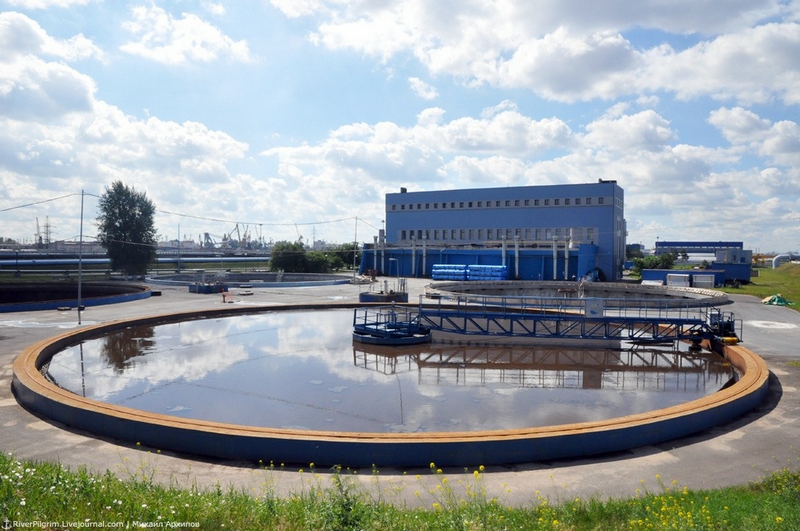
The station also contains 12 primary and secondary traps for mechanical cleaning.
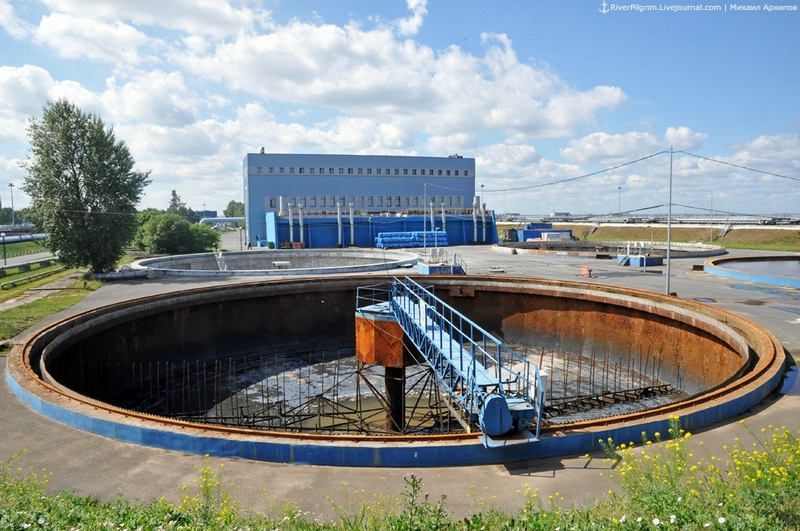
Spill of an aerotank which is a mixture of active mud and purified waste water that goes to secondary traps.

This aerotank is used for air supply.
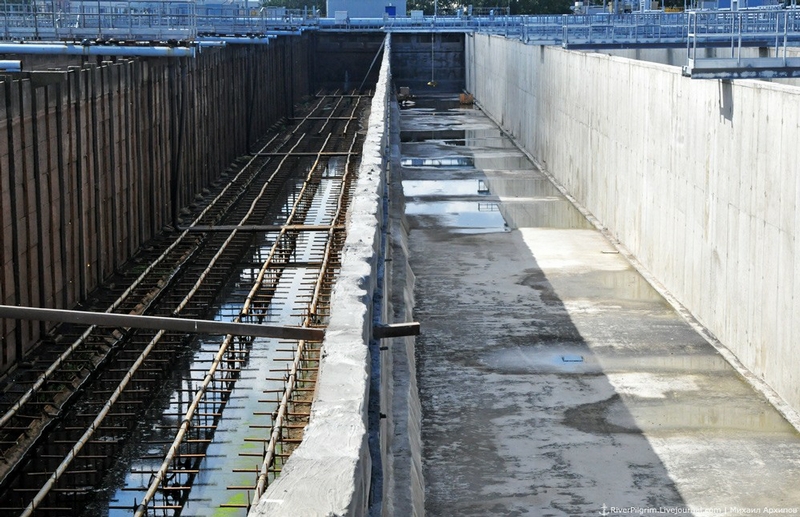
Last stage of cleaning.

Secondary trap.
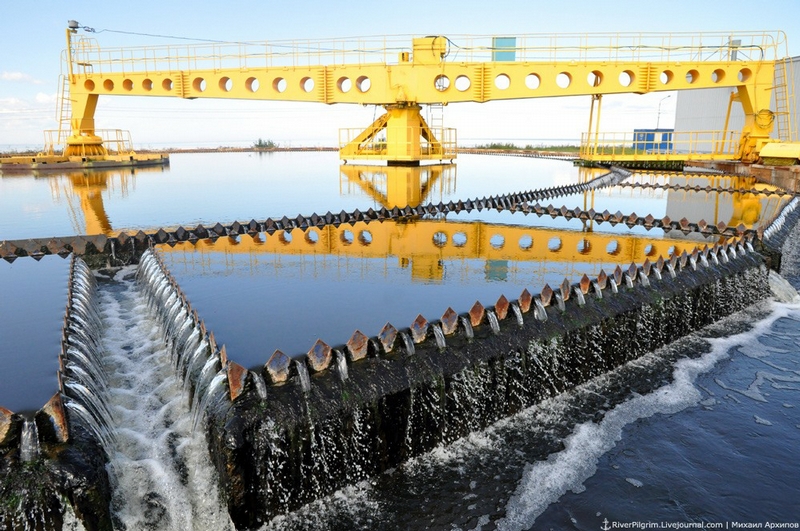
The yellow appliance is called a mechanical rake. It absorbs separated mud.
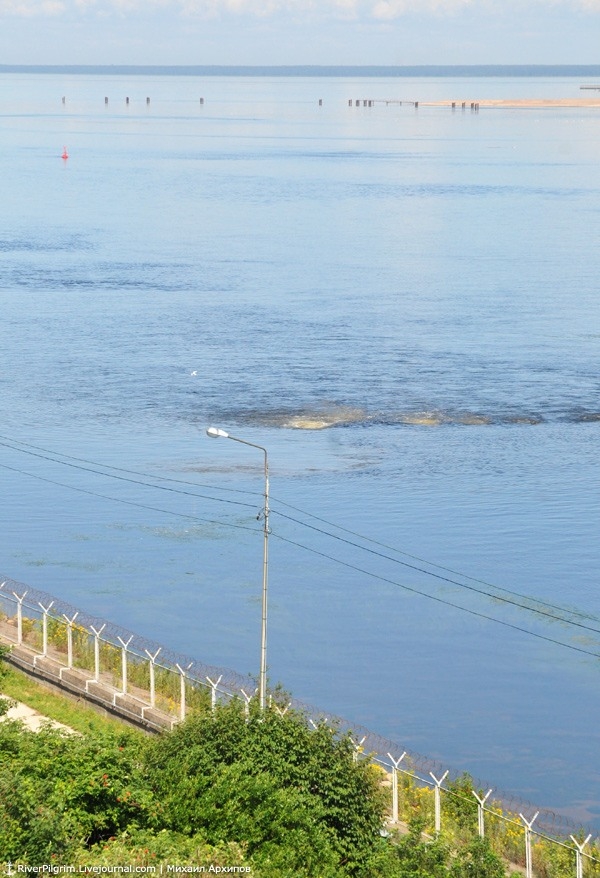
This is where purified water from the station goes.
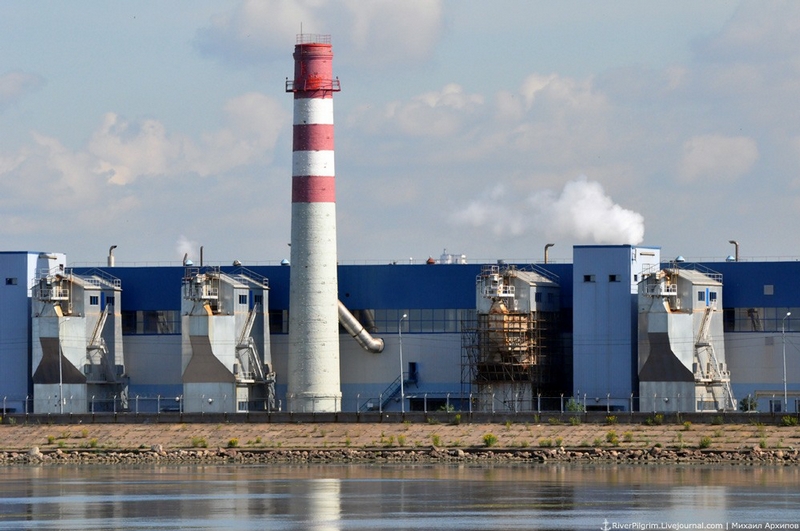
Mud left in the process of cleaning is burnt at the plant built in 1997.

First the residue is dried with the help of Flottweg centrifuges and then goes to furnaces where it is burnt.
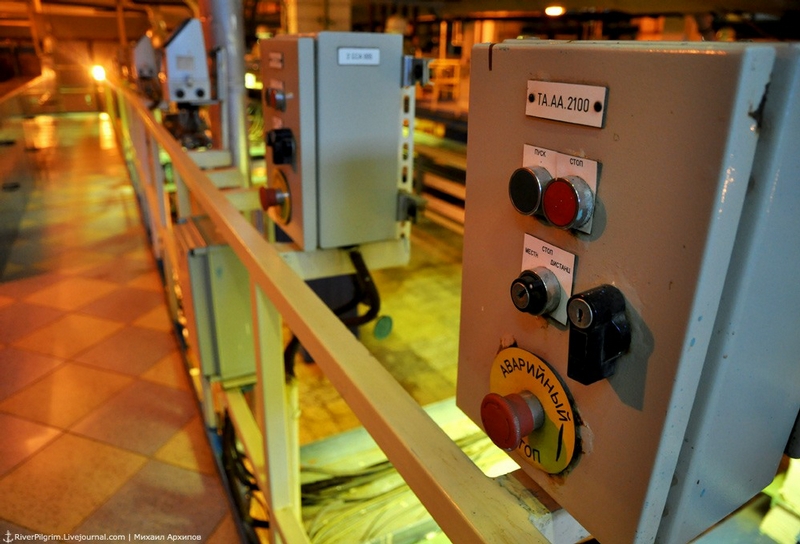
The Stop button.

Residue is burnt in the furnaces.
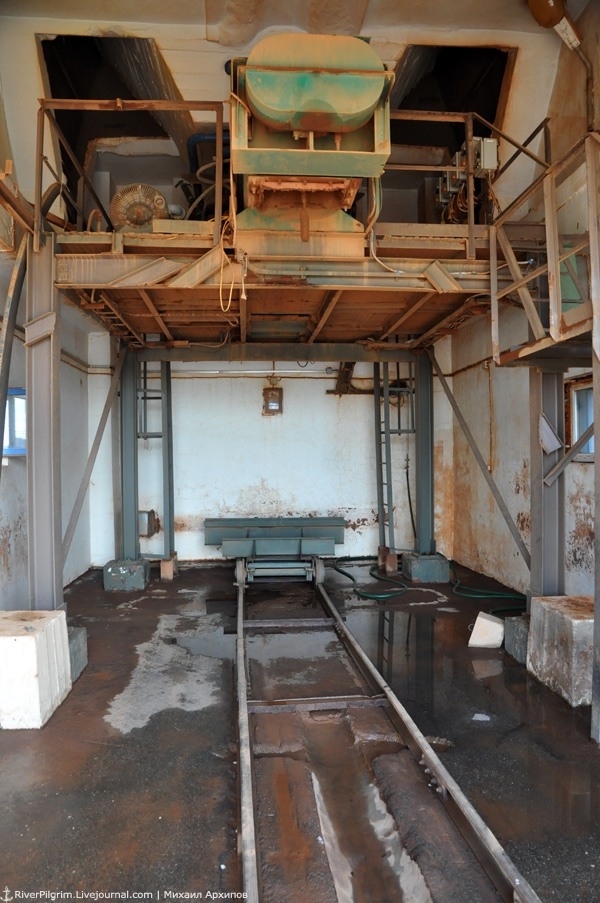
The ash will be taken to a special polygon.
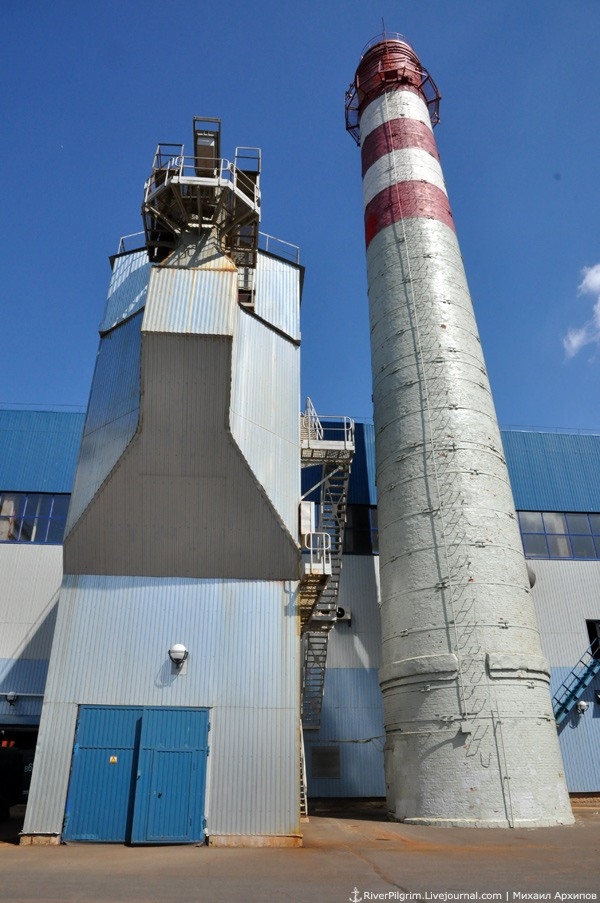
But before that it will be put in closed containers.
Location: Saint-Petersburg